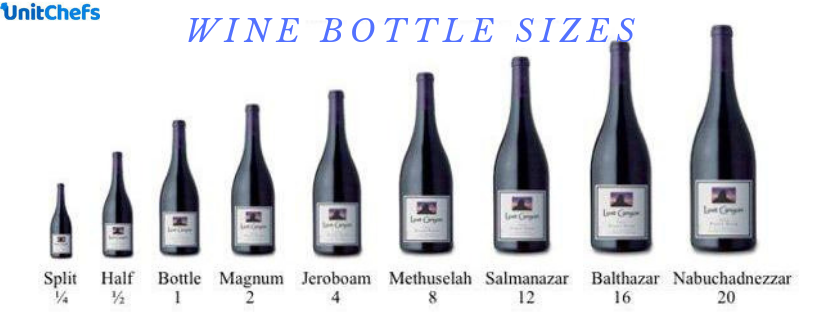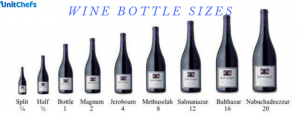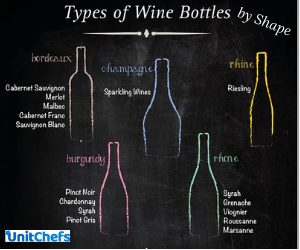
Wine Volume: Wine Bottle Sizes and Names
When it comes to storing wine, size does matter. Wine matures more slowly in larger bottles or vessels. That is probably one of the reasons why there are some giant-sized bottles. For obscure reasons, there seems to be a convention for naming wine bottles and their sizes after biblical kings and other historical figures. The standard wine bottle, generally made of glass measures 750 milliliters (26.40 imp fl oz; 25.36 US fl oz). Yet, there is a variety of other volumes and shapes for wine bottles. Also, they come in different colors which vary from dark green, through medium and light-green to colorless depending on the type of wine they should hold.

Wine volume is a term related to Alcohol by Volume which is abbreviated as ABV or alc/vol. It is a common measure of the amount of alcohol present in any given volume of alcoholic drink and is expressed in alcohol percentage. It shows how much alcohol (ethanol – chemical compound) content there is in a beverage. The Units utilized for wine volume are the same as some standard volume units such as ounces, liters, milliliters. The names of the containers are also used for units for wine volumes such as glass and bottle.
When it comes to the most appropriate shape for the wine bottle, winemakers follow the tradition of their local areas. The most common shapes are called: Burgundy, Bordeaux, Rhine, Champagne, German, Alsace/Mosel, Chianti, etc.

There are several assumptions for the adoption of the 750 ml bottle as a universal standard:
- One theory stated that 750ml is equivalent to what a person used to consume during a meal. However, that theory relates to times when wine contained less alcohol compared to now.
- There is a suggestion that states that the 750 ml standard was the metric adaptation of the fifth (a fifth of a gallon) which was the standard unit of volume formerly used for wine and distilled beverages in the United States and Britain. It equals one-fifth of a US liquid gallon, also 4⁄5 quart, or 25 3⁄5 US fluid ounces (757 ml). Until the middle of the 20th century, there was no standard size for wine bottles. In the USA, the standard was adopted in 1979, as part of a push to establish the metric system. Quickly enough, this size became convenient and practical both for customers and wine producers around the world, and the standard was incorporated globally to facilitate exports to the lucrative U.S. market.
- Another theory goes back to a very practical issue dated back to the around the 18° century when they discovered the importance of storing the wine in glass bottles. During that time, the glass bottles were made by glass blowers. Their pulmonary strength was obviously limited and allowed them to create only containers up to 650-750 ml size.
- The standard 750-ml bottle also facilitated the transport of wine, says Jean-Marc Bahans, professor at the University Montesquieu Bordeaux IV and legal scholar on the vine and wine.:
“At the time, vessel capacity was calculated in barrels. A barrel of Bordeaux was 900 liters. If we divide 900 by 0.75 liter, we get 1200, one hundred cases of twelve bottles. As usual, the origin is found in practice. “
The bottle sizes are multiples of the standard bottle of 750ml and here’s a list with the most common names and sizes:
Wine Bottle Sizes
| Name | Size in ml/L |
|---|---|
| Piccolo or Split | 187.5 ml |
| Quarter | 200 ml |
| Demi or Half | 375 ml |
| Jennie | 500 ml |
| Standard | 750 ml |
| Magnum | 1.5 L |
| Double Magnum | 3 L |
| Jeroboam (still wine) also Rehoboam | 4.5 L |
| Imperial also Methuselah | 6 L |
| Salmanazar | 9 L |
| Balthazar | 12 L |
| Nebuchadnezzar | 15 L |
| Melchior also Solomon | 18 L |
| Primat or Goliath | 27 L |
| Melchizedek or Midas | 30 L |